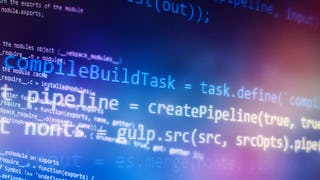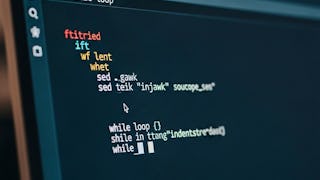Many fields, such as data science, bioinformatics, and Linux systems administration, require the manipulation of textual data. Tasks include extracting fields or records meeting certain conditions from structured data (e.g., comma-separated files), combining content from multiple files, applying systematic changes to all lines of a document, sorting or randomizing data, and splitting larger files into smaller files. While these operations could be done by hand, they tend to be time-consuming, tedious and, worst of all, error prone.



Recommended experience
What you'll learn
Use of basic and advanced tools for searching and manipulating text in a Linux environment
Regular expressions in the context of awk, sed and grep
Skills you'll gain
Details to know

Add to your LinkedIn profile
October 2025
12 assignments
See how employees at top companies are mastering in-demand skills

There are 7 modules in this course
In this module, we start by providing some background on Linux tools, the prerequisites for the course, Linux flavors, the motivation for automating tedious and repetitive tasks, and accessing the GitHub repository. We also provide optional instructions for Mac users who wish to access the standard version of the tools that are distributed with Linux distros.
What's included
2 videos5 readings
In this module, we dive in and cover the simpler tools in roughly their order of increasing complexity: head, tail, wc, expand, tac, paste, nl, tr, sort, shuf, uniq, split and cut. Along the way, we discuss the similarities and differences between the tools, potential pitfalls, limitations and linking tools together to create simple workflows.
What's included
9 videos1 reading5 assignments
This module explores three of the more powerful Linux text processing tools: grep, awk and sed. We start with using grep to find matches in a file. We then cover awk, which is actually a full programming language, but will limit our treatment to one-liners for extracting fields and records from a file. The module concludes with sed, a stream editor that can operate efficiently on arbitrarily large files.
What's included
4 videos3 assignments
This module introduces regular expressions and the key features such as character classes, quantifiers, groups, anchors, alternation and word boundaries. These features are all covered in the context of grep, but we'll see later that they carry over to awk and sed.
What's included
6 videos1 assignment
This module continues our discussion or regular expressions, going into some of the more advanced features that are only available in Perl compatible regular expressions, such as lazy matching, lookahead, lookbehind and backreferences. We also show how regexes can be used with awk and sed.
What's included
6 videos2 readings2 assignments
This is the last mandatory module of the course and includes the final exam and some closing remarks.
What's included
1 video1 reading1 assignment
This module contains the lecture notes used during the production of the videos. This is not required reading and is provided for those who wish to supplement the videos or who find that they learn better from written materials. Unlike the transcripts, these PDFs contain the commands that were executed during the videos. Note that while the videos generally follow the lecture notes, there will not be an exact correspondence between the videos and notes.
What's included
25 readings
Instructor

Offered by
Explore more from Data Analysis
 Status: Free Trial
Status: Free Trial Status: Free Trial
Status: Free Trial
Why people choose Coursera for their career





Open new doors with Coursera Plus
Unlimited access to 10,000+ world-class courses, hands-on projects, and job-ready certificate programs - all included in your subscription
Advance your career with an online degree
Earn a degree from world-class universities - 100% online
Join over 3,400 global companies that choose Coursera for Business
Upskill your employees to excel in the digital economy
Frequently asked questions
To access the course materials, assignments and to earn a Certificate, you will need to purchase the Certificate experience when you enroll in a course. You can try a Free Trial instead, or apply for Financial Aid. The course may offer 'Full Course, No Certificate' instead. This option lets you see all course materials, submit required assessments, and get a final grade. This also means that you will not be able to purchase a Certificate experience.
When you purchase a Certificate you get access to all course materials, including graded assignments. Upon completing the course, your electronic Certificate will be added to your Accomplishments page - from there, you can print your Certificate or add it to your LinkedIn profile.
Yes. In select learning programs, you can apply for financial aid or a scholarship if you can’t afford the enrollment fee. If fin aid or scholarship is available for your learning program selection, you’ll find a link to apply on the description page.
More questions
Financial aid available,



